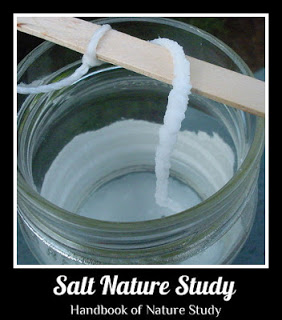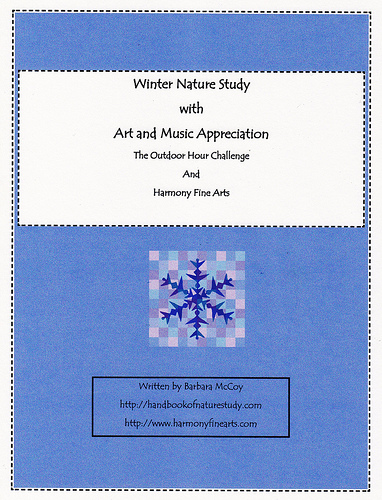Outdoor Hour Challenge
Winter Series Ebook
Salt
Special Long-term Project: For this challenge we will be doing something a little different. How would you like to grow your very own crystals to observe? You can make our own crystals by dissolving salt in water and then letting it sit in a saucer in your very own windowsill.
Inside Preparation Work:
Read pages 753-754 in the Handbook of Nature Study. These pages give you a quick study of this common substance that we use daily. Be sure to read through the lesson starting on page 753 that outlines an easy to complete activity to make salt crystals to observe using regular table salt and water. Get your crystals growing and then take your outdoor time. I would suggest putting the saucer in a warm windowsill where it will not be moved.
Outdoor Hour Time:
Spend 15-20 minutes outdoors this week in your own backyard carefully looking for something that interests you. Relaxed nature study outside your own backyard can be surprisingly fun since you let your children lead your adventure.
Something you might like to try if you have freezing temperatures in your area is to conduct an experiment where you try to freeze salt water outdoors in your own backyard. Take two pie pans. Fill one with tap water and one with saltwater. Compare the time it takes for each to freeze.
Follow-Up Activity:
Keep close watch on your salt crystals growing in your saucer. Use the notebook page from your Winter Series ebook or a blank page in your nature journal to record your crystal’s growth. You can use a hand lens to observe the crystal’s shapes more closely and then record their appearance in your nature journal.
It took about six days before we actually began to see some salt crystals form in our saucer. They are fairly small but with a magnifying glass we could see their shapes easily. We found it easier to observe the crystals if you put them on a dark surface.
I know there are lots of fancy salt experiments out there, but I like to keep things simple. This simple salt and water on a saucer experiment is easy enough for any family to complete with children of any age.











































